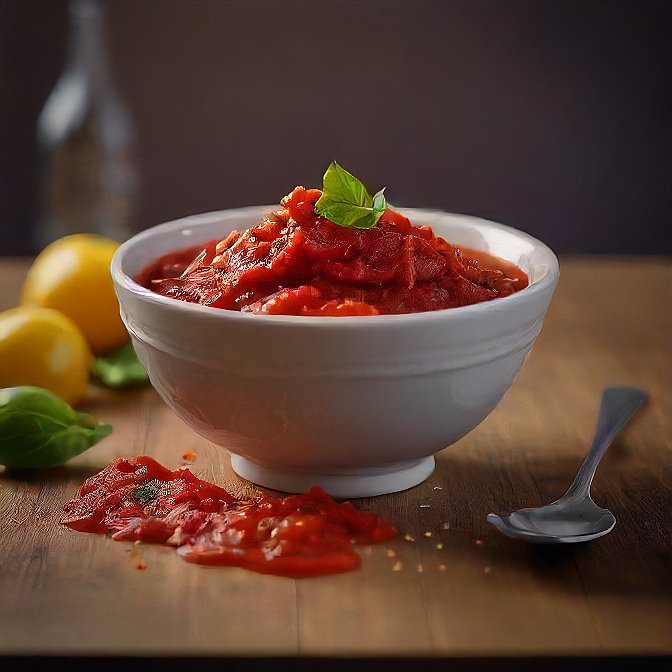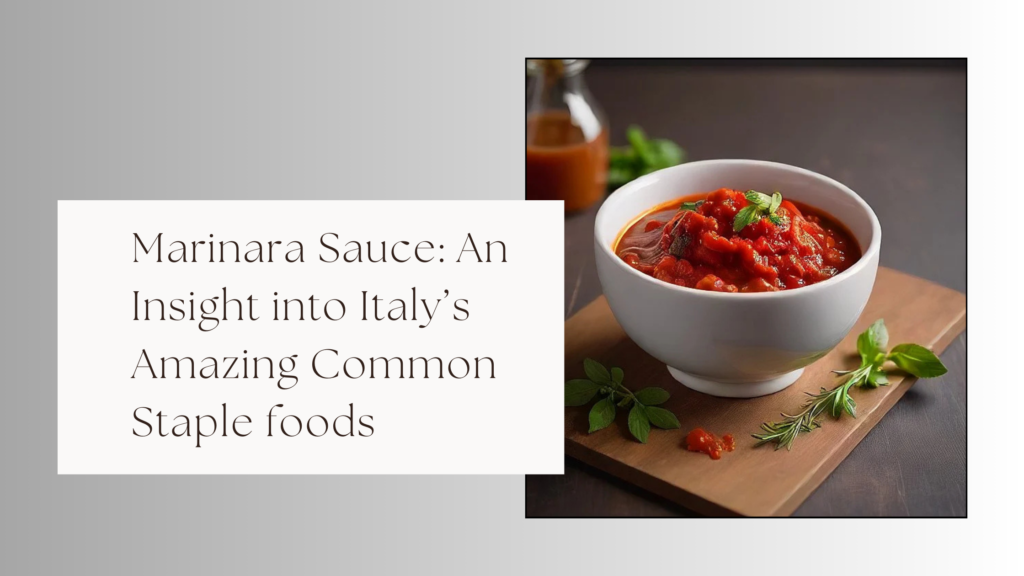Table of Contents
Introduction

Marinara sauce is one of the Italian sauces based on tomatoes and occupies a special place in the hearts of Italian people. The tangy tomato-based sauce that adds warmth and texture to pasta dishes, pizzas, and meats among other delicacies is known as marinara. Marinara is a sauce that is traditionally linked to Italian culinary practices and was especially established centuries earlier.
An Historical Perspective Of Marinara Sauce
Although it is uncertain when marinara sauce was first made, all indications are that it was developed in Naples, Italy. Traditional marinara stories indicate that it was originally a fast-prepared sauce used by the Neapolitans when on board ships. The sauce was initially named after “marinaro” which is the Italian word that means sailor. Other stories associate marinara with the 16th-century Island of Ischia, with stories that fishermen’s wives concocted the sauce with tomatoes and available herbs.
Regardless of its origin, marinara sauce has transformed over the years into a simple, yet rich sauce designed to enhance ingredients such as ripe tomatoes, garlic, onion, and olive oil. Its lack of complexity and its ability to accommodate the addition of other more refined ingredients made marinara, the go-to sauce for both humble, country fare and elegant, fine-dining Italian eateries. Today, marinara is still used as the foundation for tastes in Italian cuisine, ready sauce.
Use of Traditional Ingredients when Preparing This Marinara Sauce
This work classic marinara comes from combining a few simple ingredients which, together, deliver a deep, layered taste.
Tomatoes
Marinara sauce is made from canned or fresh tomatoes to give it a tangy as well as body. Tomatoes contribute both the sweetness and the sourness to the dish, besides adding substance. San Marzano is a kind of Italian tomato that is commonly used in sauce making but is not limited to that alone because the choice of tomato is a matter of the individual’s preference.
Olive Oil
Marinara sauce has some level of sweetness, so good olive oil softens any harsh note while also lending a fruitiness and a hint of bitterness. Extra virgin olive oil helps to impart other tastes also; the sauce acquires a creamy feel to it. Further, virgin olive oil is ideal for enhancing the flavor to its best quality.
Garlic
Garlic provides spiciness or taste and smell to marinara sauce. In slow cooking, the garlic becomes sweeter to neutralize the acidity of other food types present in the dish. Too much garlic will dominate the sauce’s freshness, hiding the intended flavors.
Onions
Onions impart a mild sweetness, slight bitterness and increase the body of a sauce to counter the watery nature of marinara. An additional bonus when caramelizing – the flavor of onions becomes nutty and richer. Onions also help in thickening the sauce.
Check Out: 6 Mustard Sauce Pairing For Every Meal: A Help Guide.
Herbs and Spices

Marina basic includes basil, or eggplant, and a small red part of chili which has herbal, floral, spice, and heat characteristics. But variations can include parsley, rosemary, thyme, and all other types of herbs. A sprinkling of black pepper and red wine vinegar gives an added depth to the food.
Marinara does not contain many components, but very good preparation is crucial. Follow these tried and true tips:
- This product could be prepared in the following way: Beginning with sweating onions and garlic in olive oil as flavoring. Cook until soft, then a translucent color appears.
- Cook crushed tomatoes on high heat after softening the scent of ingredients in the pot by sautéing. Whole tomatoes processed in cans can also be crushed gently by hand or pureed until smooth.
- Reduce the sauce to low heat for about thirty minutes to forty-five minutes so that the flavors can blend well. Stir occasionally to avoid the mixture sticking to the bottom of the pan.
- Remove the basil and stir it back into soup at the last minute in most cases, so that its color and flavor are intact. All the oils of the basil will be used to perfume the whole sauce.
- Taste from time to time while cooking and introduce some more of the source of salt, sugar, or vinegar depending on which is absent in the dish. The sauce should carry the rather striking, but balanced flavor profile of this dish.
- Marinara sauce combined with some mild simplicity makes it a timeless element of primary Italian cooking customs.
The marinara sauce, which started as something simple grew to become an important part of Italian food. When the Italian population moved to every corner of the world, so did marinara and the Italian cooking traditions. Today, the sauce features prominently across Italian food culture:
On Pasta
Marinara is referred to as the pasta sauce that can coat pasta by sticking on the noodles’ surface while also providing the finest accompanying taste. Originally developed to illuminate the long pasta such as spaghetti and linguine, it perfectly complements Parmesan. The improved pasta such as the rigatoni also has a good compatibility with carrying the marinara.
On Pizza
The all-purpose sauce, marinara, is the base of Margherita along with marinara pizzas. Its taste dissolves cheese and dough and ties all together, offering a tangy, acidic tomato flavor. Although founded in Neapolitan tradition, American pizzerias started using marinara as a base pizza sauce.
In Soups and Stews
Whether used in the simple minestrone or the more complicated Italian wedding soup, marinara adds substance and heat to Italian-style soups and stews. It is used as a component in preparing seafood stews, beef dishes, as well as dishes made from tomato with rice. They enrich very hot, which unites the ingredients into one large mass for one-pot dishes.
With Meatballs and Sausage
Marinara sauce comes in a spoonful and can be found in conjunction with Italian meatballs, sausage, chicken Parmesan, and other proteins. It adds the required moisture to a meal preparation that has a lot of meat and helps bring all the elements together. That is why it is applied to the preparation of meats to boost their savoriness at some level.
Conclusion
Although there are far too many regional sauces available in Italy, marinara is the standard sauce. Though the dishes may vary between simple Italian restaurants, the concepts remain – real ingredients prepared with little or no distortion. This way, the company pays tribute to marinara’s origins as well as brings a spotlight to the tomato.
For more info: Click Here.
FAQs
Does Marinara sauce contain meat?
No, marinara sauce is always a herb-based tomato sauce with no contents of meat in it. The only source of flavors used in the preparation of this dish is vegetables, herbs as well as spices. It should be noted that some cooks are using marinara as a meat sauce or adding meat to it. But traditional marinara has no meat in it and no animal product for that matter!
Do you have any idea on how to freeze leftover marinara sauce?
Yes, you can freeze marinara for use later because it freezes very well. Please let the sauce cool down completely before storing it in a freezer-safe and airtight container. Marinara freezes beautifully well for 2–3 months. Serve chilled and can be warmed up on a stove or microwave, but I prefer to keep it in the refrigerator and then warm it before eating.
What makes marinara different from pizza sauce?
Marinara and pizza sauce contain the following: tomatoes, olive oil, garlic, and herbs, but they are prepared differently in as much as they differ a little in texture. Marinara is sometimes slightly more slender in texture, accompanied by a stronger taste of fresh tomato. These sauces for pizzas include pastes/purees for extra boost or thickness to avoid sogginess on crust. Texture wise, pizza sauce tends to have a little more sweetness and the flavor of oregano. It also makes a great pizza or pasta sauce, however!



